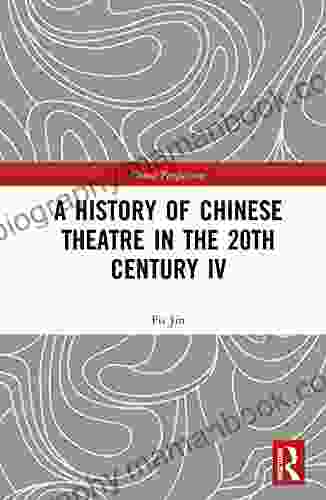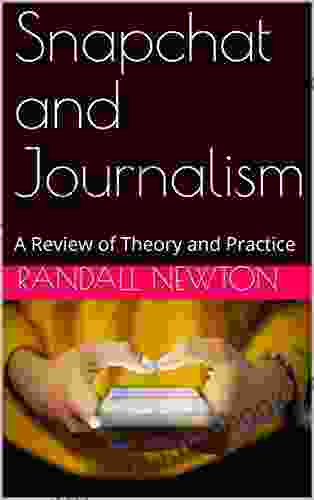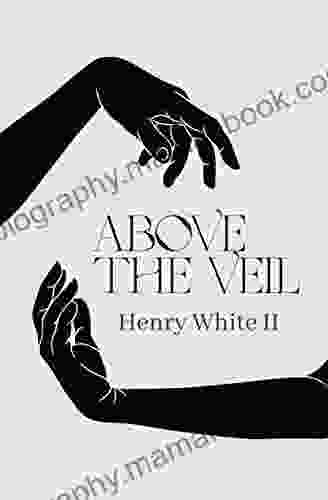A Comprehensive Exploration of Chinese Theatre's Evolution in the 20th Century: Perspectives from China

Chinese theatre has a rich and storied history that spans centuries. In the 20th century, however, Chinese theatre underwent a period of particularly profound transformation, marked by artistic innovations, social engagement, and a heightened sense of cultural significance. This article delves into the intricate tapestry of Chinese theatre's evolution in the 20th century, drawing on diverse perspectives from China to provide a comprehensive understanding of this dynamic art form.
The Crucible of Modernity: Theatre in the Early 20th Century
The dawn of the 20th century heralded a period of significant social and political change in China, and theatre was not immune to these transformative forces. The late Qing dynasty and the early Republican era witnessed a surge of new ideas and artistic influences that challenged traditional conventions and pushed the boundaries of theatrical expression.
5 out of 5
| Language | : | English |
| File size | : | 3716 KB |
| Text-to-Speech | : | Enabled |
| Screen Reader | : | Supported |
| Enhanced typesetting | : | Enabled |
| Word Wise | : | Enabled |
| Print length | : | 300 pages |
| Paperback | : | 312 pages |
| Item Weight | : | 12 ounces |
| Dimensions | : | 5.51 x 0.5 x 8.5 inches |
| Hardcover | : | 150 pages |
One of the most notable developments of this period was the emergence of "New Drama." Inspired by Western realism and naturalism, New Drama sought to depict contemporary life in a realistic and accessible manner. Playwrights such as Cao Yu and Tian Han crafted powerful dramas that explored themes of social injustice, political corruption, and the complexities of modern relationships.
The Birth of Modern Chinese Opera
In addition to New Drama, the early 20th century also witnessed the birth of modern Chinese opera. Traditional Chinese opera, with its elaborate costumes, stylized acting, and intricate musical structures, had long been a beloved form of entertainment. However, in the early 20th century, reformers such as Mei Lanfang and Cheng Yanqiu sought to update and revitalize the art form.
Drawing inspiration from Western theatre techniques, these reformers introduced new elements into Chinese opera, including more realistic acting, spoken dialogue, and a streamlined musical accompaniment. The result was a hybrid form of opera that retained the essence of traditional Chinese opera while embracing the innovations of the modern era.
Theatre as a Tool for Social Change
As China underwent a period of political and social turmoil in the mid-20th century, theatre emerged as a powerful tool for social change. During the May Fourth Movement of 1919, students and intellectuals used theatre to voice their dissent against foreign imperialism and promote progressive ideas. In the 1930s and 1940s, theatre played a vital role in mobilizing support for the resistance against Japanese aggression.
Plays such as "Thunderstorm" by Cao Yu and "Sunrise" by Lao She became iconic symbols of the era, capturing the spirit of national unity, social upheaval, and the search for a new China. Theatre provided a platform for artists to express their concerns about society and to inspire audiences to action.
The Cultural Revolution and Its Aftermath
The Cultural Revolution (1966-1976) had a profound impact on Chinese theatre. Traditional theatre forms were denounced as "feudal remnants" and replaced by "revolutionary operas" that glorified Chairman Mao and the Communist Party. Many established theatre artists were persecuted and silenced.
In the aftermath of the Cultural Revolution, a new wave of theatre emerged in the 1980s. This "Theatre of Reform" embraced experimentation and diversity, seeking to push the boundaries of theatrical expression and explore new themes. Playwrights such as Gao Xingjian and Liu Xiaobo tackled taboo subjects and challenged the dominant political narrative.
Contemporary Chinese Theatre: A Global Perspective
In the 21st century, Chinese theatre has continued to evolve and flourish. Contemporary Chinese theatre artists are actively engaging with global trends while also drawing inspiration from their rich cultural heritage. They are creating innovative and thought-provoking works that address a wide range of contemporary issues, from urbanization to gender equality.
Chinese theatre companies are now touring internationally, showcasing their unique perspectives and artistry on a global stage. The works of Chinese playwrights such as Meng Jinghui and Wang Xiaoping are being translated and performed around the world, introducing audiences to the diversity and vitality of Chinese theatre.
Perspectives from China
To gain a deeper understanding of Chinese theatre's evolution in the 20th century, it is essential to consider the perspectives of Chinese scholars, artists, and critics. These perspectives provide valuable insights into the complex social, political, and artistic factors that shaped the development of Chinese theatre.
Chinese theatre scholar Lu Wei argues that the 20th century was a period of "constant innovation" for Chinese theatre, as it absorbed influences from both Chinese and Western traditions while also developing its own unique identity. Theatre director Chen Xinyi highlights the role of theatre in Chinese society, noting that "theatre has always been a reflection of the times, and it has played a vital role in shaping Chinese history and culture."
The evolution of Chinese theatre in the 20th century is a testament to the resilience and adaptability of this dynamic art form. Through periods of social upheaval, political change, and artistic experimentation, Chinese theatre has consistently reflected the aspirations, struggles, and triumphs of the Chinese people.
By drawing on diverse perspectives from China, we gain a profound appreciation for the intricate tapestry of Chinese theatre's evolution in the 20th century. This article has provided a comprehensive overview of this remarkable journey, highlighting the transformative shifts, artistic innovations, and the profound impact that Chinese theatre has had on shaping the country's cultural and social landscape. As Chinese theatre continues to evolve in the 21st century, it is bound to continue to captivate and inspire audiences both at home and abroad.
5 out of 5
| Language | : | English |
| File size | : | 3716 KB |
| Text-to-Speech | : | Enabled |
| Screen Reader | : | Supported |
| Enhanced typesetting | : | Enabled |
| Word Wise | : | Enabled |
| Print length | : | 300 pages |
| Paperback | : | 312 pages |
| Item Weight | : | 12 ounces |
| Dimensions | : | 5.51 x 0.5 x 8.5 inches |
| Hardcover | : | 150 pages |
Do you want to contribute by writing guest posts on this blog?
Please contact us and send us a resume of previous articles that you have written.
 Top Book
Top Book Novel
Novel Fiction
Fiction Nonfiction
Nonfiction Literature
Literature Paperback
Paperback Hardcover
Hardcover E-book
E-book Audiobook
Audiobook Bestseller
Bestseller Classic
Classic Mystery
Mystery Thriller
Thriller Romance
Romance Fantasy
Fantasy Science Fiction
Science Fiction Biography
Biography Memoir
Memoir Autobiography
Autobiography Poetry
Poetry Drama
Drama Historical Fiction
Historical Fiction Self-help
Self-help Young Adult
Young Adult Childrens Books
Childrens Books Graphic Novel
Graphic Novel Anthology
Anthology Series
Series Encyclopedia
Encyclopedia Reference
Reference Guidebook
Guidebook Textbook
Textbook Workbook
Workbook Journal
Journal Diary
Diary Manuscript
Manuscript Folio
Folio Pulp Fiction
Pulp Fiction Short Stories
Short Stories Fairy Tales
Fairy Tales Fables
Fables Mythology
Mythology Philosophy
Philosophy Religion
Religion Spirituality
Spirituality Essays
Essays Critique
Critique Commentary
Commentary Glossary
Glossary Bibliography
Bibliography Index
Index Table of Contents
Table of Contents Preface
Preface Introduction
Introduction Foreword
Foreword Afterword
Afterword Appendices
Appendices Annotations
Annotations Footnotes
Footnotes Epilogue
Epilogue Prologue
Prologue Ruth Ellen Danquah
Ruth Ellen Danquah Fumio Sasaki
Fumio Sasaki Irene Kessler
Irene Kessler Simon Singh
Simon Singh Ruth Marie Paterson
Ruth Marie Paterson Andrew Park
Andrew Park V K Beta
V K Beta Raph Koster
Raph Koster Lindsey Pogue
Lindsey Pogue Z B Hill
Z B Hill Randall Parrish
Randall Parrish Max Brand
Max Brand Matthew James Weigel
Matthew James Weigel Jodi Taylor
Jodi Taylor Marina Ermakova
Marina Ermakova Kathy Hearn
Kathy Hearn Pietro Mascagni
Pietro Mascagni Anna Garnet
Anna Garnet Charles A Mills
Charles A Mills Barbara Karnes Rn
Barbara Karnes Rn
Light bulbAdvertise smarter! Our strategic ad space ensures maximum exposure. Reserve your spot today!
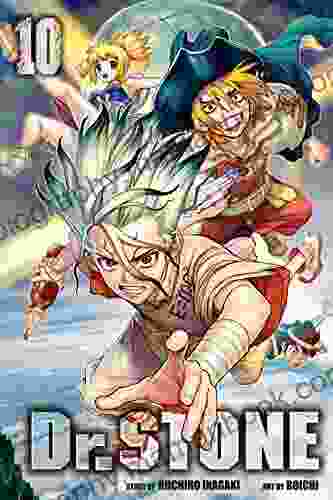
 Thomas PowellDr. Stone Vol. 10: Wings of Humanity - A Technological Renaissance Unleashed!
Thomas PowellDr. Stone Vol. 10: Wings of Humanity - A Technological Renaissance Unleashed! Roy BellFollow ·3.2k
Roy BellFollow ·3.2k Arthur Conan DoyleFollow ·16.2k
Arthur Conan DoyleFollow ·16.2k Grant HayesFollow ·11.9k
Grant HayesFollow ·11.9k Ian MitchellFollow ·5k
Ian MitchellFollow ·5k Michael CrichtonFollow ·17k
Michael CrichtonFollow ·17k James GrayFollow ·9.7k
James GrayFollow ·9.7k Martin CoxFollow ·8.2k
Martin CoxFollow ·8.2k William WordsworthFollow ·14.2k
William WordsworthFollow ·14.2k
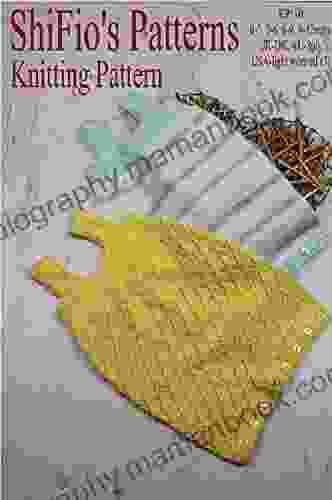
 Barry Bryant
Barry BryantKnitting Pattern Kp190 Baby Sleeping Bags Sizes 3mths...
This easy-to-follow...
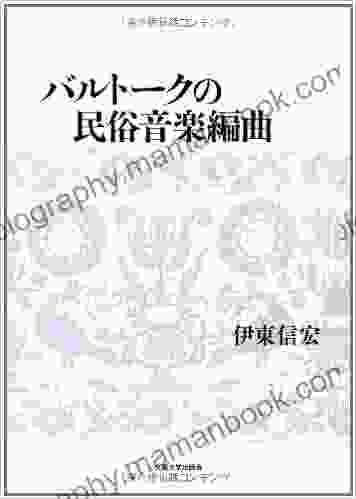
 Rudyard Kipling
Rudyard KiplingFolk Music Arrangements of Bartók: A Musical Tapestry of...
Béla Bartók, the renowned...

 Garrett Bell
Garrett BellThe Yellow House Memoir: A Literary Masterpiece that...
A Journey of Resilience,...
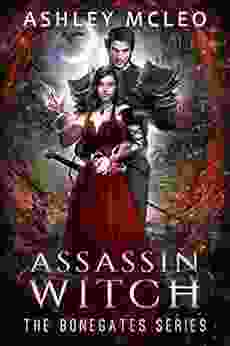
 George Martin
George MartinAssassin Witch Dark Faerie: The Bonegates
In the shadowy...
5 out of 5
| Language | : | English |
| File size | : | 3716 KB |
| Text-to-Speech | : | Enabled |
| Screen Reader | : | Supported |
| Enhanced typesetting | : | Enabled |
| Word Wise | : | Enabled |
| Print length | : | 300 pages |
| Paperback | : | 312 pages |
| Item Weight | : | 12 ounces |
| Dimensions | : | 5.51 x 0.5 x 8.5 inches |
| Hardcover | : | 150 pages |


